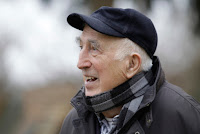Contributing Author: The Tortoise
Clinical depression affects people in different ways and can cause a wide variety of symptoms. These can range from lasting feelings of sadness, hopelessness, tearfulness, loss of interest in things you used to enjoy, physical symptoms such as fatigue, aches and pains, sleeping badly or too much, having no appetite or sex drive, and symptoms of anxiety.
1 Symptoms of anxiety can in turn include feeling worried or restless, dizziness, heart palpitations,
2 and also, from this author's personal experience, panic attacks, feeling constantly overwhelmed and disoriented, gastric problems such as acidity and nausea, the inability to think or concentrate, inability to keep the body warm, shaking hands, locked jaw muscles, difficulty speaking, and severe unease and anxiety around people. The severity of depressive symptoms also varies with individuals, and can range from feeling persistently low in spirit or mood, to feeling that life is no longer worth living, with accompanying suicidal thoughts. Depression is a real illness with real symptoms which must be treated. The good thing is that with the right treatment and support, most people can make a full recovery.
3Even if you are taking medication for depression, there are additional everyday things you can do to help alleviate low or depressed mood. While depression can make it very difficult to embrace change, or take part in new actions or thoughts, do your best to try out these 3 tips. They can help!
1) Get Enough Vitamin D
Research now links Vitamin D deficiency to depression, amongst other conditions.
4,5 A 2013 Boston University study has found that people with the lowest levels of Vitamin D were 11 times more prone to be depressed than those with normal levels.
6,7 Low serum levels of vitamin D have also been found to predict clinically-significant depressive symptoms in otherwise healthy individuals.
8,9 Therefore, make sure you get enough Vitamin D by way of direct sunshine on your skin (not through glass) or Vitamin D supplements, and remember that Vitamin D levels in your body can take months to return to normal once depleted.
10 People with dark skin may need up to 25 times more exposure time than those with light skins to produce the same amount of Vitamin D, so adjust accordingly.
112) Walk Lighter & Brighter

A 2014 Canadian Institute for Advanced Research (CIFAR) study found that while the way we feel can affect the way we walk, the way we walk can also influence the way we feel. Past research by Queen's University researcher and CIFAR Senior Fellow Nikolaus Troje had already shown that people with depression move very differently to people without depression. The CIFAR study, however, found that making people walk as if they had depression had the effect of lowering their mood. Subjects asked to adopt 'depressed' walking postures (shoulders slouched, body hunched over, minimal arm movements) experienced worse moods than subjects who were asked to walk more brightly, and they remembered many more negative terms from a list of 'positive' and 'negative' words such as 'pretty', 'anxious', and 'afraid'. According to Troje, mood affects memory, and clinically depressed people recall negative memories more often than positive ones, especially if the memories involved themselves directly. The negatively-tinged memories then lower their mood even more. Troje says, "If you can break that self-perpetuating cycle, you might have a strong therapeutic tool [with which] to work with depressive patients."
123) Exercise!

A 2014 University College London study found that people who exercised more faced a lower risk of depression. Published in JAMA Psychiatry, the 30-year study of over 11,000 people found a two-way relationship between depression and physical activity -- people who were active were less likely to be depressed, while people who were depressed were less likely to be active. The study found that each additional activity session per week reduced the odds of depression by 6%. UCL Institute of Child Health researcher and lead author of the study Dr Snehal Pinto Pereira says, "Assuming the association is causal, leisure time physical activity has a protective effect against depression. If an adult between their twenties and forties who isn't physically active became active 3 times per week, they would reduce their risk of depression by approximately 16%. ..[T]his effect was seen across the whole population and not just in those at high risk of clinical depression. The more physically active people were, the fewer depressive symptoms they reported."
13
REFERENCES
1 Clinical Depression, National Health System UK
2 Generalised anxiety disorder in adults, National Health System UK
3 Clinical Depression, National Health System UK
4 Davenport, Liam, Vitamin D levels predict depression, Medscape
5 Hossein-nezhad, A, et al, Influence of Vitamin D status and Vitamin D3 supplementation on genome wide expression of white blood cells: a randomized double-blind clinical trial, US National Centre for Biotechnology Information
6 ibid.
7 10 Vitamin D deficiency symptoms you can identify yourself, University Health News Daily (Depression)
8 Davenport, Liam, Vitamin D levels predict depression, Medscape
9 Kerr, David C.R., et al, Associations between Vitamin D levels and depressive symptoms in healthy young adult women, Journal of Psychiatry Research
10 Archer, Dale, Vitamin D deficiency and depression, Psychology Today
11 ibid.
12 Change your walking style, change your mood, Science Daily
13 Leisure time physical activity linked to lower depression risk, University College London News
Image Credits:
Depression: Counselling, Pixabay
Vitamin D: Daria-Yakovleva, Morguefile
Walking: Pexels, Pixabay
Exercise: stevepb, Pixabay

































